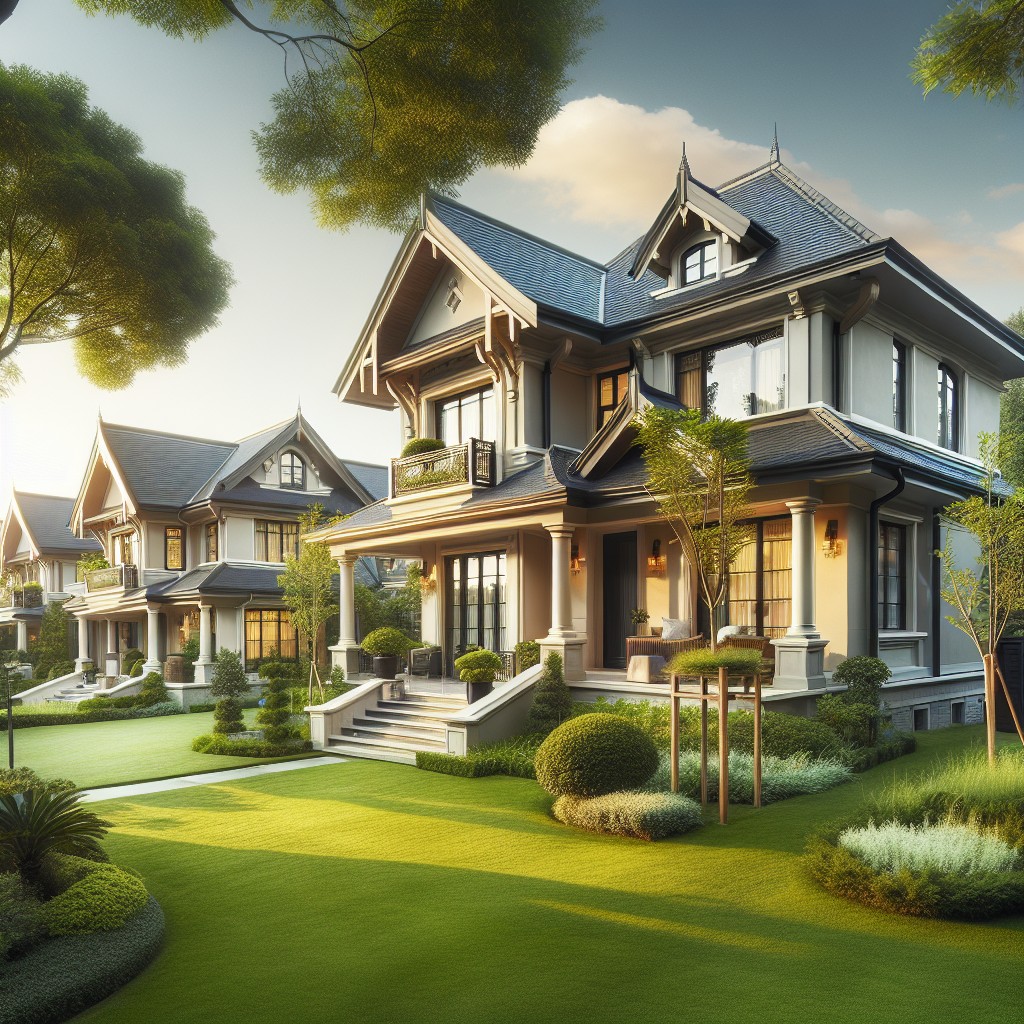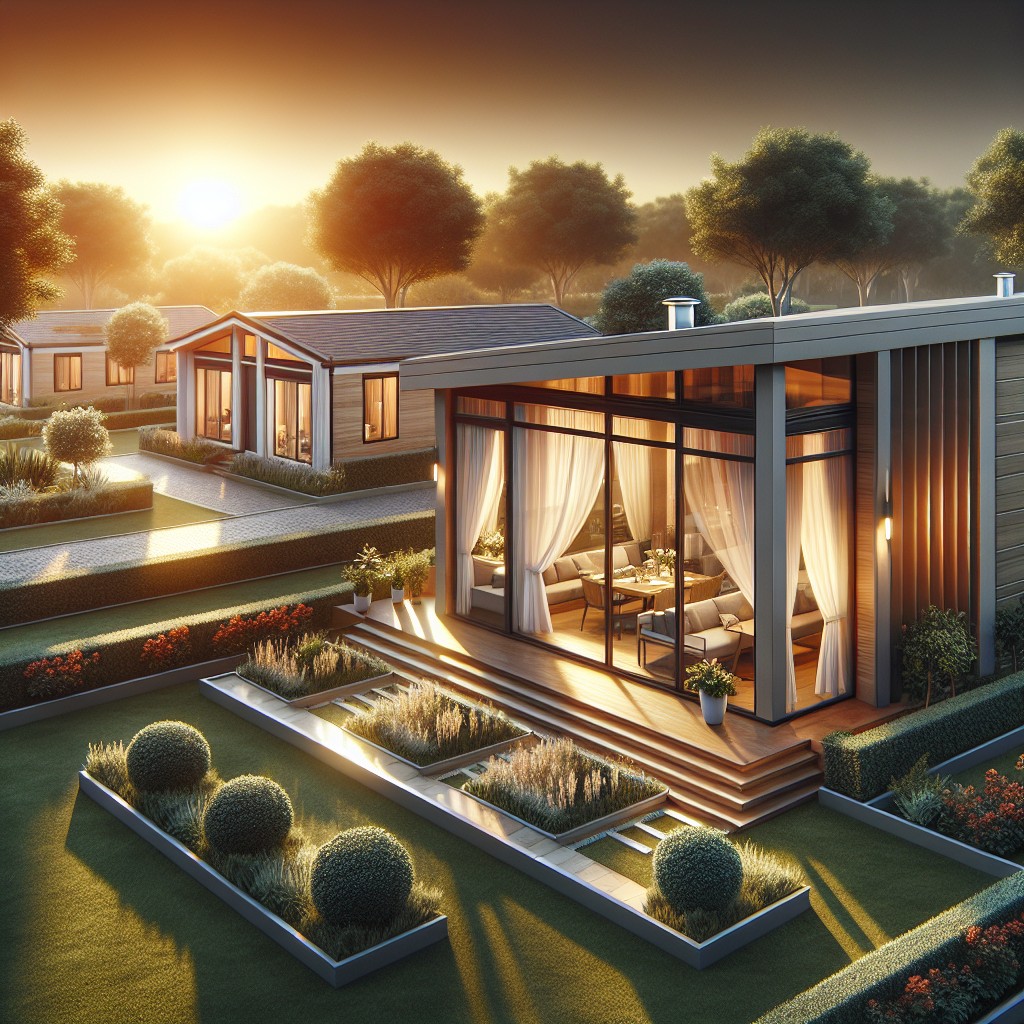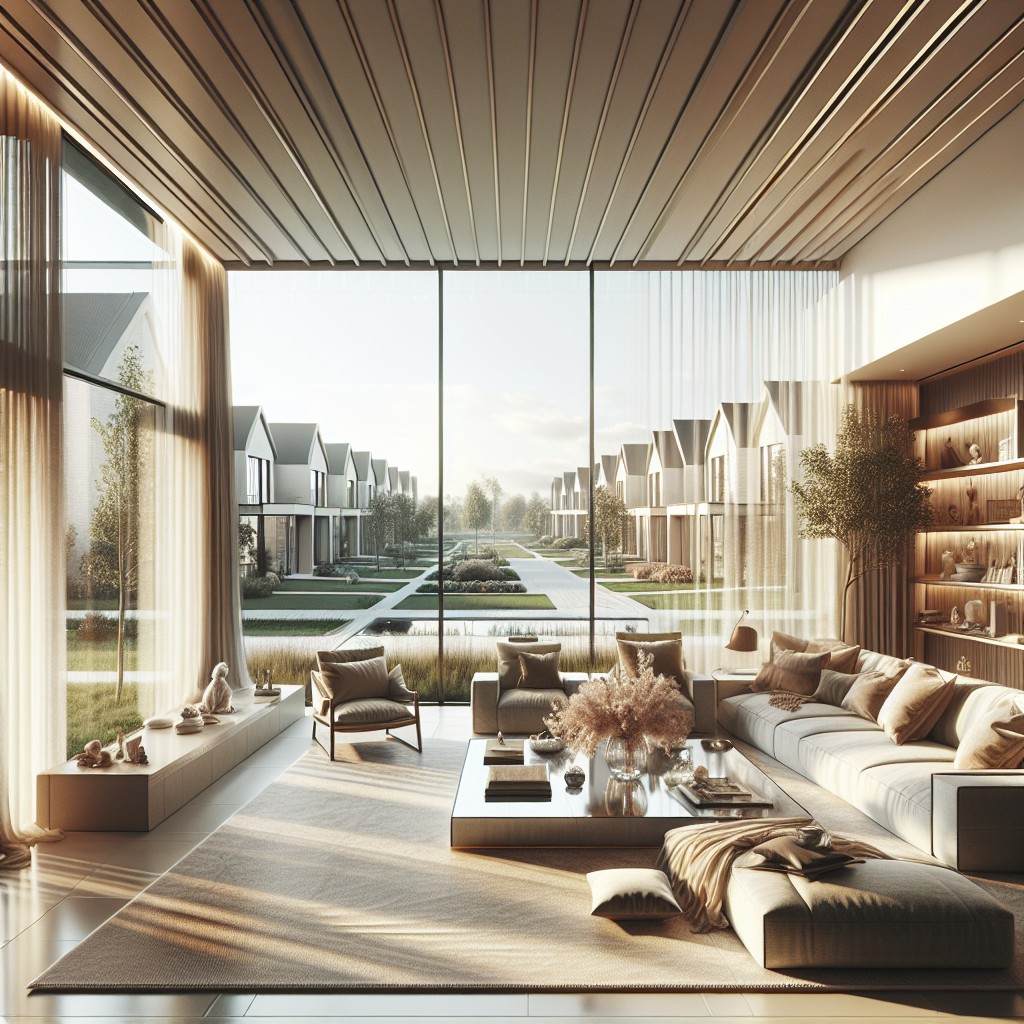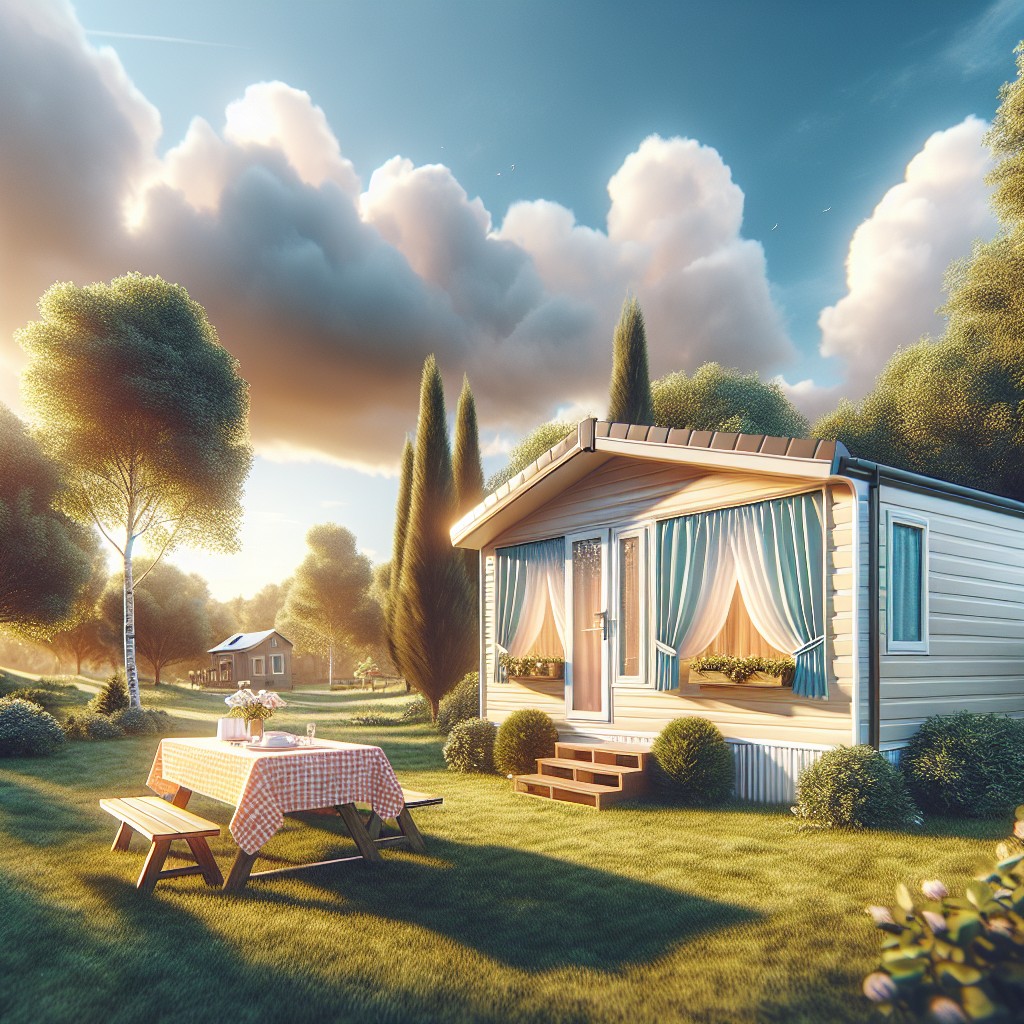Last updated on
Champion Homes is a leading choice for budget-conscious individuals because it offers reliable, customizable, and sustainable housing solutions without compromising on quality and durability.
In the ever-growing realm of sustainable housing, modular homes have been rising in popularity primarily because of their affordability, efficiency, and design versatility. Champion Homes, a leading name within this modular housing industry, offers an extensive spectrum of quality-built homes that are not only durable but remarkably affordable in comparison with conventional forms of housing.
From a single-section, affordable model to a truly plush multi-section luxury home, Champion boasts a wide array of homes to suit varying budgets, lifestyle needs, and architectural preferences. This article aims to provide you the intricate breakdown of the cost, influencing factors, and the approximate range of Champion Homes prices to help you make the most informed decision about your future eco-friendly abode.
The estimated price range for these homes is $115 to $260+ per square foot. This estimate includes the cost of the home module, labor, and site work, but does not include the cost of land and any home upgrades.
Price ranges:
- Northwood A25604-60 (3 Bedrooms, 2 Bathrooms, 1,600 Square Feet): $224,000 – $290,000+
- Athens 504 (1 Bedroom, 1 Bathroom, 399 Square Feet): $73,815 – $103,740+
- Bradford BD-07 (3 Bedrooms, 2 Bathrooms, 1,325 Square Feet): $185,500 – $240,156+
- Creekside Manor 2562L (2 Bedrooms, 1 Bathroom, 747 Square Feet): $138,195 – $194,220+
- Kingsbrook KB-64 (3 Bedrooms, 2 Bathrooms, 1,932 Square Feet): $270,480 – $350,175+
Key takeaways:
- Location, model selection, and materials affect Champion Homes prices.
- Climate-specific modifications and energy efficiency add to the cost.
- Base prices range from $50,000 to over $200,000.
- Customization options and upgrades come with additional costs.
- Financing options are available, including conventional mortgages and personal property loans.
Factors Influencing Champion Homes Prices

The cost of a Champion home can vary widely based on several variables. Location plays a crucial role; homes delivered to regions with higher transportation costs or stringent building codes may carry a heftier price tag. Model selection also impacts the bottom line. Larger or more complex designs generally command higher prices.
Material choices are another important cost determinant. Standard finishes and fixtures tend to keep prices down, whereas opting for premium materials and high-end features can increase the overall cost significantly.
Moreover, factory-built homes can be affected by the economy at large; fluctuations in the costs of raw materials like lumber or steel due to market demand or trade policies can be reflected in the final price. It’s also worth noting that local labor costs for site preparation and home installation will contribute to the total investment.
Climate-specific modifications can also sway the price. Homes in regions prone to extreme weather conditions might require additional insulation or reinforced construction elements, adding to the cost.
Lastly, the design’s energy efficiency level can influence pricing. Champion homes with enhanced energy-saving features often come with a higher initial price but can lead to substantial savings over time.
Champion Homes Standard Inclusions
When considering a Champion home, it’s essential to understand what comes standard with your purchase. Each model includes a base set of features that cater to comfort, energy efficiency, and aesthetic appeal. You’ll typically find:
- Energy Star appliances, ensuring your home is eco-friendly and your utility bills are manageable.
- Durable roofing and siding materials designed for longevity and resistance to weather.
- Basic flooring options like carpeting and vinyl that are stylish yet practical for everyday living.
- Standard window fittings that provide natural light and insulation.
- A basic HVAC system to maintain a comfortable indoor climate year-round.
- Insulation that meets or exceeds regional requirements, contributing to energy savings.
- Pre-installed plumbing and electrical systems, with standard fixtures and fittings.
These inclusions are the foundation of your home, and while they meet rigorous quality standards, there’s always room to upgrade or customize to better match your lifestyle and preferences.
Price Range for Champion Homes Models
Champion Homes offers a diverse range of models with varying prices to cater to different budgets and preferences. The cost of a standard model can start as low as $50,000 for smaller, single-section homes, ideal for individuals or couples.
Mid-range options, typically featuring more space and amenities, can be found between $75,000 and $150,000.
For larger, multi-section or custom-designed homes, prices can exceed $200,000, reflecting the additional square footage, higher-grade materials, and advanced design features.
Keep in mind that these figures are base prices and do not include the costs for land, site preparation, delivery, installation, and any additional customizations or upgrades you may choose. The final price tag will be influenced by these variables and may vary according to regional market differences. It’s crucial to consider these factors when budgeting for your new Champion home.
Customization Options and Additional Costs
When tailoring a Champion home to your preferences, the customization options are vast, ranging from simple aesthetic tweaks to substantial structural modifications. Adding a fireplace, upgrading countertops to granite, or selecting a luxury flooring option can transform the space. However, each addition comes with a cost. For instance, choosing a higher-end siding material may increase durability but will also impact your budget. Moreover, expanding the size of your home or adding a garage could necessitate a greater financial outlay.
Electing for energy-efficient upgrades like double-pane windows or advanced insulation can lead to long-term savings, despite the initial expense. Structural changes such as altering roof pitches or ceiling heights redefine the home’s look and feel but must be budgeted for accordingly.
Remember that any adjustments made to the standard floor plan may require additional design reviews and could extend the timeline of your build. Keep in mind that permit fees or local regulations may also affect the overall cost when customizing your home. It’s crucial to work closely with your dealer to understand how each choice affects the final price, ensuring your dream home aligns with your financial plan.
Financing Options for Champion Homes Purchases
Securing financing for a Champion home can be similar to mortgaging a traditional home, offering options for a range of financial situations:
- Conventional Mortgages: Large banks and credit unions often provide traditional mortgage products that can be used for manufactured homes.
- FHA Loans: These government-backed loans are particularly accessible, requiring lower down payments and accommodating less-than-perfect credit scores.
- VA Loans: For veterans and service members, VA loans offer advantageous terms such as zero down payment and competitive interest rates.
- Personal Property Loans: Also known as chattel loans, these are suitable if you do not own the land where your home will be placed.
- Home Only Loans: Specifically designed for the home itself, excluding land purchase.
- Land/Home Loans: This more comprehensive loan covers both the home and the land it occupies.
- Manufacturer Financing: Champion Homes may offer financing options directly or through preferred lenders for qualified buyers.
Exploring multiple financing avenues ensures the best possible terms can be secured, potentially leading to long-term savings on your home purchase. Always compare interest rates, terms, and total loan costs before making a decision.
Champion Homes Delivery and Installation Costs
Delivery and installation fees vary by location and the complexity of the project. Here are key points to consider:
- Proximity to Manufacturing: Costs generally increase the further a home must be transported from the factory.
- Site Accessibility: Difficult-to-reach sites can necessitate special equipment or methods, raising expenses.
- State Regulations: States have individual requirements for transportation and installation, affecting overall prices.
- Foundation Type: Whether a home requires a pier, slab, or basement foundation affects installation costs.
- Utility Connections: The extent of work needed to connect electricity, water, sewage, or gas can influence total charges.
- Land Preparation: The cost of clearing land, grading, or removing obstacles is typically a separate expense from the home unit itself.
Keep in mind that bundling delivery and installation with your Champion Home purchase can sometimes result in savings compared to sourcing these services separately.
Warranty and After-sales Service Costs
Understanding your Champion home’s warranty details is essential for long-term satisfaction and peace of mind. Typically, these homes come with a one-year warranty for labor and materials, a five-year warranty for major systems ‘protection, and a 10-year limited warranty for structural defects.
Always review the warranty coverage to know what is included and for how long.
If issues arise, after-sales service steps in to manage repairs covered by your warranty. This service is crucial in ensuring any defects are promptly addressed without extra charges, within the warranty period. It’s important to note that the costs for services not covered by the warranty will be the homeowner’s responsibility.
Keep in mind that service calls may have associated fees if they fall outside warranty terms. Regular maintenance is up to the homeowner and not included in the warranty, which is why adopting a proactive approach to home care can prevent additional costs.
For items not covered by warranty or after it has expired, homeowners may opt for a service agreement or extended warranty for continued coverage.
Stay informed about the specifics of your Champion home’s warranty period and its coverage limits to effectively manage future after-sales service and maintenance needs.
Comparing Champion Homes Prices With Other Manufacturers
When exploring the manufactured home market, evaluating Champion Homes alongside competing brands offers valuable perspective. Key comparison points include:
- Base Pricing: While Champion Homes may start at a competitive price point, comparing similar size and layout offerings from other manufacturers can reveal differences in initial affordability.
- Standard Features: Analyze what is included as standard in a Champion home versus competitors to ensure you’re comparing equivalent value. Some manufacturers might offer upgraded materials or appliances at base price.
- Customization Costs: Examine the price impact of customization. While Champion offers a wide range of options, some competitors may have a different pricing strategy for add-ons and modifications.
- Energy Efficiency: Assess the energy ratings of Champion Homes models against those produced by others. Energy efficiency can significantly influence long-term savings and overall cost.
- Warranty Coverage: Compare the length and breadth of Champion’s warranties to those provided by other manufacturers. Extended or more comprehensive warranties may indicate higher build quality and long-term value.
- Resale Value: Research how Champion Homes retain their value over time in comparison to other brands, which can affect the total investment potential.
- Financing Partnerships: Review financing options presented by various manufacturers. Favorable terms or partnerships with financial institutions can translate into savings or added convenience.
Remember, the cheapest option isn’t always the best value. Durability, customer service, and overall quality of construction are crucial to consider beyond the sticker price.
Cost Effectiveness of Champion Homes Floor Plans
Champion homes are designed to be cost-effective, merging affordability with quality and style. Through efficient use of space and materials, these floor plans minimize waste while maximizing living areas. Bulk purchasing of construction materials allows Champion to pass savings directly to the customer. Energy efficiency is also prioritized, with homes often featuring insulation and windows that reduce heating and cooling expenses.
Another aspect that contributes to cost-effectiveness is the controlled environment of the factory setting, where Champion homes are built. This mitigates the risk of construction delays and material damage due to weather, which can otherwise increase costs. Additionally, the streamlined building process often leads to shorter construction timelines, further reducing labor costs and getting homeowners into their houses quicker.
Furthermore, the variety of floor plans caters to diverse needs and budgets, ensuring that there’s a cost-effective option for different preferences—whether it’s a compact and simple layout for first-time homebuyers or more expansive designs for growing families. Recognizing these elements underscores the financial prudence behind selecting a Champion home as a budget-friendly yet quality living solution.
Champion Homes Price Trends and Market Factors
Economic climate and raw material costs significantly impact the pricing of Champion Homes. When the economy thrives, prices may rise due to increased demand and higher labor costs. Conversely, during economic downturns, prices may become more competitive.
Supply chain fluctuations also play a critical role. Scarcity in lumber or metal can lead to increased prices for these essential building materials, which affects the final cost to consumers.
Technological advancements can either increase or decrease prices. Innovations may lead to more cost-effective manufacturing processes, but the introduction of new, more expensive “smart home” features can add to the overall price.
Location-specific factors such as transportation costs, local regulations, and taxation can vary widely, directly influencing the final price tag for different regions.
Lastly, housing market trends dictate pricing strategies as well. During times when the market favors buyers, Champion Homes may offer more incentives or lower prices to attract customers. When the market shifts to a seller’s advantage, prices may rise accordingly.
Understanding the Total Cost of Ownership for Champion Homes
When considering a Champion Home, it’s vital to look beyond the initial purchase price. The total cost of ownership encompasses various ongoing expenses:
1. Maintenance Costs: Like any dwelling, regular upkeep is essential. Factor in routine care tasks such as HVAC servicing, roof inspections, and exterior treatments.
2. Utility Bills: The efficiency of the home’s insulation, windows, and appliances will impact monthly utility payments. Champion Homes are often designed with energy efficiency in mind, which can lead to savings.
3. Insurance: Manufactured homes may have different insurance requirements and costs compared to site-built homes; research the best coverage for your model.
4. Property Taxes: These will vary depending on location and the assessed value of the home.
5. Depreciation or Appreciation: While traditionally, manufactured homes may depreciate over time, a well-maintained home, especially on owned land, can appreciate in value.
Include these factors in your budget to get a realistic picture of what your Champion Home will cost over its lifetime.
Price List Breakdown for Select Champion Homes Models
When considering various Champion Homes models, you’ll notice a range in prices reflective of size, design, and features. Here are a few examples to give you a clear understanding of what you can expect:
- Gaffney Model: This compact, single-section home typically starts at around $50,000. It features a cozy floor plan ideal for individuals or small families.
- Hawstone Model: A mid-range option, usually priced from $80,000 to $100,000. This model offers additional space and amenities, suitable for those needing more room.
- Neffsville Model: This larger, multi-section home may begin at $150,000 and rise depending on customizations. It caters to buyers requiring expansive living areas and customization.
Remember, these figures are starting points and may vary based on location, market conditions, and individual dealer pricing. Additional features like luxury fittings or advanced smart home technology will also affect the final cost. Always check with the local dealers for the most current and accurate pricing information.
How Champion Homes Prices Compare to Traditional Home-Building Costs
When assessing the affordability of Champion Homes, it’s essential to consider the comparison with traditional home-building. Manufactured homes commonly offer a lower price per square foot due to the efficiencies of factory production, which eliminates weather delays and minimizes labor costs. Moreover, bulk material purchasing by companies like Champion can lead to further savings.
Yet, it’s important to factor in that site preparation and land costs are separate for both options. While traditional homes can often have higher resale value due to the perception of sturdiness, manufactured homes like those from Champion are quickly closing the gap with improvements in quality and durability.
Another point to weigh in is the streamlined process Champion uses. This tends to shorten the timeline from conception to move-in, reducing carrying costs such as interim housing or construction loan interest. Overall, Champion Homes can represent significant savings for home buyers when compared to the cost of building a traditional home, while still offering comfort, style, and modern amenities.
Future Resale Value of Champion Homes
Understanding the potential future resale value of your Champion home is crucial when making a long-term investment. Modular and manufactured homes, such as those from Champion, tend to depreciate differently than traditional site-built homes. However, various factors can impact their resale value:
- Location: Just like traditional homes, location plays a significant role. Homes situated in well-maintained communities with good amenities generally hold value better.
- Condition: The upkeep of the home is essential. Well-maintained homes with updated features are more likely to appreciate or maintain their value over time.
- Market demand: The market for manufactured homes can vary. In areas where these homes are in high demand, resale values may hold steady or even increase.
- Stigma: Historically, manufactured homes have faced a stigma of being of lesser quality than site-built homes. This perception is changing as the quality of modular homes improves, potentially affecting future resale values positively.
- Land ownership: Homes sold with the land they sit on typically appreciate, while those on leased land tend to depreciate. If your Champion home is permanently affixed to a foundation and you own the land, this bodes well for resale value.
By keeping these factors in mind, you can better predict the future financial return of your Champion home and make informed decisions to enhance its value over time.
Tips for Negotiating the Best Price On a Champion Home
Consider visiting a Champion Homes model center or retail location during a promotion period, as manufacturers often offer discounts or incentives to drive sales.
Research the local housing market and compare the prices of similar manufactured homes to ensure you’re getting a competitive deal.
Review the standard features and optional upgrades for each model closely. Prioritize must-haves versus nice-to-haves to avoid overspending on non-essentials.
If financing, shop around for the best mortgage rates and terms to potentially reduce the overall cost of your home.
Negotiate add-ons, such as appliances or certain finishes. Some dealers may be willing to include upgrades at a reduced price to make the sale.
Inquire about show models or stock units. These homes may be sold at a discount as they are typically constructed for display purposes and the dealer may be motivated to rotate these for newer models.
Look for a price-matching guarantee. Some dealers are willing to match or beat the prices offered by competitors, providing leverage in your negotiation.
Champion Homes Model Examples: Gaffney, Whitten, Burnett
Explore the diverse range of Champion Homes models, each offering unique features tailored to various lifestyles and budgets:
- Gaffney: This compact design maximizes space without sacrificing comfort, featuring two bedrooms and an open-plan living area. Ideal for those looking to downsize or step into their first home, Gaffney balances affordability with modern amenities.
- Whitten: A perfect blend of form and function, the Whitten model includes three bedrooms and boasts a generous master suite. The inclusion of a dedicated laundry room and a kitchen island caters to the needs of growing families or entertainers.
- Burnett: Emphasizing luxury living, the Burnett model offers four bedrooms, multiple bathrooms, and spacious common areas. This model is designed for homeowners seeking extra space for a home office or gym, ensuring each family member’s needs are met.
Each model’s price reflects its size, layout, and standard features. Prospective buyers can expect variation in cost based on customization, additional fixtures, and regional market factors.
Champion Homes Model Examples: Palston, Marlane, Raiford
Delving into specific models offered by Champion Homes, the Palston, Marlane, and Raiford each cater to different lifestyles and budgetary considerations.
Palston: A model that emphasizes open-concept living, the Palston offers a spacious living room flowing into a well-appointed kitchen. Ideal for families valuing communal spaces, it typically features three bedrooms and two bathrooms over a single story. Energy-efficient appliances and smart floor planning make this model a cost-effective choice.
Marlane: With a focus on functionality and comfort, the Marlane is designed to maximize space utility. It often presents as a two-bedroom, two-bath home, making it perfect for smaller families or downsizing couples. The home’s highlights include ample storage, a master suite with an en-suite bathroom, and a cozy dine-in kitchen.
Raiford: Catering to those desiring a bit more luxury and space, the Raiford usually boasts a larger footprint with options for up to four bedrooms. The inclusion of upscale features like a walk-in closet, a deluxe master bath, and a modern kitchen with an island reflects its appeal to homeowners looking for both elegance and convenience.
Each model showcases the flexibility of Champion Homes to accommodate diverse buyer needs while maintaining sustainable building practices and competitive pricing.
Champion Homes Model Examples: Rochelle, Haywood, San Saba
The Rochelle model offers a compact yet elegantly designed space that’s perfect for small families or as a starter home. With two bedrooms, two bathrooms, and a modern kitchen-living room layout, the Rochelle balances coziness with functionality.
Moving up in size, the Haywood boasts three bedrooms and two bathrooms. Its floor plan is designed to provide more living space, making it suitable for larger families. The Haywood’s master suite with a walk-in closet and an en-suite bathroom is a highlight, providing a private retreat within the home.
For those seeking a spacious living environment, the San Saba stands out with its generous layout. It includes four bedrooms, two bathrooms, and a separate family room. The open kitchen with an island is ideal for entertaining, and the additional bedrooms offer flexibility for guests or can serve as office spaces for remote work.
Champion Homes Model Examples: Jennings, Groveton, Lockney
The Jennings model showcases a compact design ideal for individuals or small families, emphasizing an open floor plan that merges living and dining spaces for a seamless, airy feel. Notably, energy-efficient appliances and fixtures are highlighted, aligning with contemporary eco-conscious living standards.
Switching to the Groveton, spaciousness and luxury are at the forefront. This model is designed with larger families in mind, featuring multiple bedrooms, a dedicated laundry room, and an optional fireplace. The master suite often includes a walk-in closet and an en-suite bathroom, providing a private retreat within the home.
Lastly, the Lockney represents a balance between size and affordability. It appeals to those seeking a mid-range option, typically offering three bedrooms and two bathrooms. The layout is strategized to maximize living space without compromising on comfort, which includes a well-appointed kitchen that opens to the living room, fostering a social environment for family interaction.
Champion Homes Model Examples: Alvaton, Hawstone, Edenborn, Hampden, Neffsville
The Alvaton model by Champion Homes epitomizes compact living without compromising style. It’s an ideal choice for individuals or small families, offering a mix of both comfort and efficiency.
Moving to the Hawstone, we find a model that balances the charm of traditional design with modern amenities. It’s perfect for homeowners looking for spacious living areas and an open-concept kitchen.
The Edenborn stands out for those aspiring to luxury in a modular home. It features high-end finishes and expansive living spaces, catering to anyone wishing for a premium residential experience.
For those in need of a versatile family home, the Hampden provides multiple bedrooms and a layout that encourages family interaction, while also allowing for private retreats within the home.
Lastly, the Neffsville model is designed with practicality in mind, showcasing a straightforward layout that caters to the essentials of home life, while maintaining the craftsmanship and quality Champion Homes is known for.
Each of these models reflects Champion Homes’ commitment to providing a diverse range of housing solutions, designed to cater to varied lifestyles and budgets.
FAQ
How much do most modular homes cost?
On average, the cost of a modular home is approximately $270,000, however, the final price can vary significantly depending on various factors like square footage, number of stories, bedrooms, type and brand of modular home, land preparation, foundation installation, and delivery charges.
How much is the cheapest mobile home?
The cheapest mobile home, specifically a single-wide trailer, typically costs between $60,000 to $90,000.
How much does a modular home cost in KY?
The cost of a modular home in Kentucky ranges from $50,000 to $712,200, depending on the customization of the plan, which includes options for 1 to 5 bedrooms and 1 to 4 bathrooms.
What is the highest rated mobile home manufacturer?
Skyline Homes is the highest rated mobile home manufacturer in America as of 2023.
What is the average cost of constructing a sustainable home in the US?
The average cost of constructing a sustainable home in the US ranges from $200,000 to $400,000 based on factors including house size and location.
What factors influence the pricing of prefabricated homes?
The pricing of prefabricated homes is influenced by factors such as the material used, labor costs, the size and design, customization, fittings and fixtures, location, and land value.
Which eco-friendly building materials can significantly reduce the cost of modular homes?
Recycled steel, reclaimed wood, and bamboo are eco-friendly building materials that can significantly reduce the cost of modular homes.
Related reading:
Table of Contents





